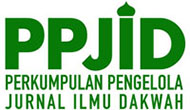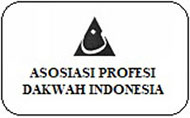Da’i (Muslim Preachers) Idols, Fatwas, and Political Constellations: Empirical Study of Millennial Generation Perspective
Abstract
Keywords
Full Text:
PDFReferences
‘Abd Al-Raḥmān, J. (2004). Aṭfāl al-Muslimīn Kaifa Rabāhum al-Nabiyyu al-Amīn.
Al-Arefe, M. bin A. (2011). Istamti’ Bi Hayātika Funūn At-Ta’āmul Ma’a An-Nās fī Dzilli As-Sīrah An-Nabawiyyah. Saudi Arabia: Sarikah Muslim.
Al-Mālikī, M. bin A. (2004). At-Tahdzīr min Al-Mujāzafati bi At-Takfīr. Kairo: Dār Jawāmi’ Al-Kalim.
Al-Mālikī, M. bin A. (2008). Manhaj As-Salaf fī Fahmi An-Nushūsh baina An-Nadzariyyah wa At-Tathbīq. Beirut: Al-Maktabah Al-Ashriyyah.
Al-Rawashdeh, M. S. (2014). The Impact of Globalization on the Political Culture of the Arab Youths. Journal of Middle Eastern and Islamic Studies (in Asia), 8(4), 81–120. https://doi.org/10.1080/19370679.2014.12023250
Al-Suri, Y. K. H. (1991). Asalib al-Rasul fi al-Dakwah wa al-Tarbiyah (p. 85).
Al-Umuri, A. D. (1994). As-Sirah An-Nabawiyyah As-Shahihah (p. 722). Maktabah Al-Ulum Wa Al-Hikam.
Ali, S. I. (2002). Ushul Al-Fiqh At-Tarbawi Al-Islami: As-Sunnah Al-Nabawiyyah Ru’yah Tarbawiyyah. Kairo: Dar Al-Fikr Al-Arabi.
Arnez, M. (2009). Dakwah by the Pen. Indonesia and the Malay World, 37(107), 45–64. https://doi.org/10.1080/13639810902743040
Ashaari, M. (2015). The improvement of teaching and learning in the course “Da’wah roduction in electronic media” through scripts and hosting. Turkish Online Journal of Educational Technology, 2015, 666–672.
Ashworth, P. (2015). Developments in public communications on CCS. International Journal of Greenhouse Gas Control, 40, 449–458. https://doi.org/10.1016/j.ijggc.2015.06.002
Ath-Thabari, I. J. (1994). At-Tafsīr Ath-Thabarī: Jāmi’ Al-Bayān ’An Ta’wīl Al-Qurān (p. 607). Muassasah Ar-Risalah.
Bakkar, A. K. (2011). Haula At-Tarbiyyah wa At-Ta’lim. Beirut: Dar Al-Kalam.
Barni, D. (2020). Adolescents’ internalization of moral values: the role of paternal and maternal promotion of volitional functioning. Journal of Family Studies, 1–13. https://doi.org/10.1080/13229400.2020.1789494
Briandana, R. (2020). Da’wah communication and social media: The interpretation of millennials in southeast Asia. International Journal of Economics and Business Administration, 8(1), 216–226. https://doi.org/10.35808/ijeba/543
Bruner, R. F., & Iannarelli, J. (2011). Globalization of Management Education. Journal of Teaching in International Business, 22(4), 232–242. https://doi.org/10.1080/08975930.2011.653908
Bruzzi, S. (2015). Contested Religious Authority: Sufi Women in Ethiopia and Eritrea. Journal of Religion in Africa, 45(1), 37–67. https://doi.org/10.1163/15700666-12340028
Burhanudin, J. (2014). History, authority and power: A case of religious violence in Aceh. Journal of Indonesian Islam, 8(1), 112–138. https://doi.org/10.15642/JIIS.2014.8.1.112-138
Campbell, H. A. (2010). Religious authority and the blogosphere. Journal of Computer-Mediated Communication, 15(2), 251–276. https://doi.org/10.1111/j.1083-6101.2010.01519.x
Chaplin, C. (2018). Salafi activism and the promotion of a modern muslim identity: Evolving mediums of da’wa amongst Yogyakartan university students. South East Asia Research, 26(1), 3–20. https://doi.org/10.1177/0967828X17752414
Cheong, P. (2011a). Religious Communication and Epistemic Authority of Leaders in Wired Faith Organizations. Journal of Communication, 61(5), 938–958. https://doi.org/10.1111/j.1460-2466.2011.01579.x
Cheong, P. (2011b). Religious leaders, mediated authority, and social change. Journal of Applied Communication Research, 39(4), 452–454. https://doi.org/10.1080/00909882.2011.577085
Dickson, D. (2008). Communication, relationships, and religious difference in the northern ireland workplace: A study of private and public sector organizations. Journal of Applied Communication Research, 36(2), 128–160. https://doi.org/10.1080/00909880801922847
Díez Bosch, M., Micó Sanz, J. L., & Sabaté Gauxachs, A. (2017). Typing my Religion. Digital use of religious webs and apps by adolescents and youth for religious and interreligious dialogue. Church, Communication and Culture, 2(2), 121–143. https://doi.org/10.1080/23753234.2017.1347800
Djibat, B. (2018). Developing education through value internalization of hapolas tradition in north Maluku. International Journal of Scientific and Technology Research, 7(3), 125–130.
Feinstein, N. W. (2015). Education, communication, and science in the public sphere. Journal of Research in Science Teaching, 52(2), 145–163. https://doi.org/10.1002/tea.21192
Fuad, A. F. N. (2020). Da’wa and politics: lived experiences of the female Islamists in Indonesia. Contemporary Islam, 14(1), 19–47. https://doi.org/10.1007/s11562-019-00442-x
Ghadhban, M. M. (1992). Fiqh As-Sirah An-Nabawiyyah (p. 752). Jami’ah Ummur Qura.
Ham, J. R. (2017). Cooking to be Modern but Eating to be Healthy: The Role of Dawa-Dawa in Contemporary Ghanaian Foodways. Food, Culture and Society, 20(2), 237–256. https://doi.org/10.1080/15528014.2017.1305827
Hew, W. W. (2018). THE ART OF DAKWAH: social media, visual persuasion and the Islamist propagation of Felix Siauw. Indonesia and the Malay World, 46(134), 61–79. https://doi.org/10.1080/13639811.2018.1416757
Hirschkind, C. (2009). The ethical soundscape: Cassette sermons and Islamic Counterpublics. New York: Columbia University Press.
Ikhwan, S., & Wafi, M. H. (2022). Internet and Religious Identity Construction: Jurus Sehat Rasulullah (JSR) Da’i (Preacher) Zaidul Akbar. Jurnal Dakwah Risalah, 32(2), 184–198. https://doi.org/10.24014/jdr.v32i2.15711
Ittefaq, M. (2021). Movements for Change: How Individuals, Social Media and Al Jazeera Are Changing Pakistan, Egypt and Tunisia. International Journal of Communication, 15, 1875–1878.
Kadoda, G. (2015). Contemporary youth movements and the role of social media in Sudan. Canadian Journal of African Studies, 49(1), 215–236. https://doi.org/10.1080/00083968.2014.953556
Katsīr, A. A.-F. I. bin U. bin. (1999). Tafsīr Al-Qurān Al-Adzīm. Riyadh: Dar Thayyibah.
Lengauer, D. (2018). Sharing semangat taqwa: social media and digital Islamic socialities in Bandung. Indonesia and the Malay World, 46(134), 5–23. https://doi.org/10.1080/13639811.2018.1415276
Leong, C. (2019). Social media empowerment in social movements: power activation and power accrual in digital activism. European Journal of Information Systems, 28(2), 173–204. https://doi.org/10.1080/0960085X.2018.1512944
Lilleker, D. G. (2015). Interactivity and Branding: Public Political Communication as a Marketing Tool. Journal of Political Marketing, 14, 111–128. https://doi.org/10.1080/15377857.2014.990841
Machfudz. (2019). Communication effects word of mouth (Wom) in Wali santri’s decision on pesantren selection. International Journal of Scientific and Technology Research, 8(11), 1397–1403.
Machingambi, S. (2014). The Impact of Globalisation on Higher Education: A Marxist Critique. Journal of Sociology and Social Anthropology, 5(2), 207–215. https://doi.org/10.1080/09766634.2014.11885625
Mah, J. S. (2002). The impact of globalization on income distribution: the Korean experience. Applied Economics Letters, 9(15), 1007–1009. https://doi.org/10.1080/13504850210149124
Marhumah. (2014). A historical analysis on the geneology and the teaching of bulugh al-maram in pesantren Al-Munawwir krapyak Yogyakarta Indonesia. Journal of Indonesian Islam, 8(1), 139–184. https://doi.org/10.15642/JIIS.2014.8.1.139-184
Martínez, I. (2007). Impact of parenting styles on adolescents’ self-esteem and internalization of values in Spain. Spanish Journal of Psychology, 10(2), 338–348. https://doi.org/10.1017/S1138741600006600
Muhammad, N. A. (2021). Populisme dan Dinamika Otoritas Keagamaan Dalam Islam Di Media Sosial. Jurnal Peurawi Media Kajian Komunikasi Islam, 4(2). https://doi.org/10.18326/ijims.v8i2.199-
Nisa, E. F. (2018). Social media and the birth of an Islamic social movement: ODOJ (One Day One Juz) in contemporary Indonesia. Indonesia and the Malay World, 46(134), 24–43. https://doi.org/10.1080/13639811.2017.1416758
Nurizka, R. (2020). Internalization of school culture to foster awareness of Pancasila values in elementary school students. Universal Journal of Educational Research, 8(10), 4818–4825. https://doi.org/10.13189/ujer.2020.081053
Possamai, A. (2012). Authority and liquid religion in cyber-space: The new territories of religious communication. International Social Science Journal, 63(209), 197–206. https://doi.org/10.1111/issj.12021
Radde-Antweiler, K. (2018). Introduction: Religious authority: Ascribing meaning to a theoretical term. Journal of Religion, Media and Digital Culture, 7(3), 368–380. https://doi.org/10.1163/21659214-00703009
Rawwas, M. (1988). Dirasah Tahliliyyah Li Syahshiyati Ar-Rasul Muhammad (pp. 1–303). Dar An-Nafais.
Rock, A. (2010). Amr Khaled: From da’wa to political and religious leadership. British Journal of Middle Eastern Studies, 37(1), 15–37. https://doi.org/10.1080/13530191003661104
Roth, G. (2011). Prevention of school bullying: The important role of autonomy-supportive teaching and internalization of pro-social values. British Journal of Educational Psychology, 81(4), 654–666. https://doi.org/10.1348/2044-8279.002003
Roy, O. (2004). Globalised Islam; the search for a new Ummah. London: Hurst.
Rude, C. (2008). Introduction to the special issue on business and technical communication in the public sphere: Learning to have impact. Journal of Business and Technical Communication, 22(3), 267–271. https://doi.org/10.1177/1050651908315949
Savitri Hartono, H. (2018). Virtually (Im)moral: Pious Indonesian Muslim Women’s Use of Facebook. Asian Studies Review, 42(1), 39–52. https://doi.org/10.1080/10357823.2017.1407290
Shanahan, R. (2004). Shi a political development in Iraq: the case of the Islamic Da wa Party. Third World Quarterly, 25(5), 943–954. https://doi.org/10.1080/0143659042000232045
Sirry, M. (2013). Fatwas and their controversy: The case of the Council of Indonesian Ulama (MUI). Journal of Southeast Asian Studies, 44(1), 100–117. https://doi.org/10.1017/S0022463412000641
Sulastri, I., Rais, Z., & Bukhari. (2022). Impression Management of the Muslim Preacher in Indonesia. Jurnal Dakwah Risalah, 33(2), 113–131. https://doi.org/10.24014/jdr.v33i2.17045
Susylowati, E. (2019). Communication used by female santri as part of their social interaction in indonesian modern pesantren. International Journal of Innovation, Creativity and Change, 9(7), 77–94.
Suyanto, B., Sirry, M., & Sugihartati, R. (2019). Pseudo-Radicalism and the De-Radicalization of Educated Youth in Indonesia. Studies in Conflict and Terrorism, 0(0), 1–20. https://doi.org/10.1080/1057610X.2019.1654726
Syafei, Z. (2017). Tracing Maqaṣid Al-Shari’ah in the fatwas of Indonesian Council of Ulama (MUI). Journal of Indonesian Islam, 11(1), 99–124. https://doi.org/10.15642/JIIS.2017.11.1.99-124
Watson, K. (2001). The Impact of Globalization on Educational Reform and Language Policy: Some Comparative Insights from Transitional Societies. Asia Pacific Journal of Education, 21(2), 1–18. https://doi.org/10.1080/02188791.2001.10600191
Weismann, I. (2019). Between daʿwa and Dialogue: Religious Engagement in Muslim-minority Environments. Islam and Christian-Muslim Relations, 30(4), 505–522. https://doi.org/10.1080/09596410.2019.1601909
Weldon, P. A., Rexhepi, J., Chang, C. W., Jones, L., Layton, L. A., Liu, A., Mckibben, S., Misiaszek, G., Olmos, L., Quon, A., & Torres, C. A. (2011). Globalization and higher education in Southern California: Views from the professoriate. Compare, 41(1), 5–24. https://doi.org/10.1080/03057925.2010.532360
Zimmerman, K. (2017). America’s Real Enemy The Salafi-Jihadi Movement. American Enterprise Institute.
DOI: http://dx.doi.org/10.24014/jdr.v33i2.19042
Refbacks
- There are currently no refbacks.

This work is licensed under a Creative Commons Attribution-ShareAlike 4.0 International License.
Editorial Office:
2nd Floor, Building of Faculty of Da'wah and Communication, Universitas Islam Negeri Sultan Syarif Kasim Riau. Jl. HR Soebrantas Km 15, Simpangbaru, Tampan, Pekanbaru
Email : jurnalrisalah@uin-suska.ac.id

This work is licensed under a Creative Commons Attribution-ShareAlike 4.0 International License.















